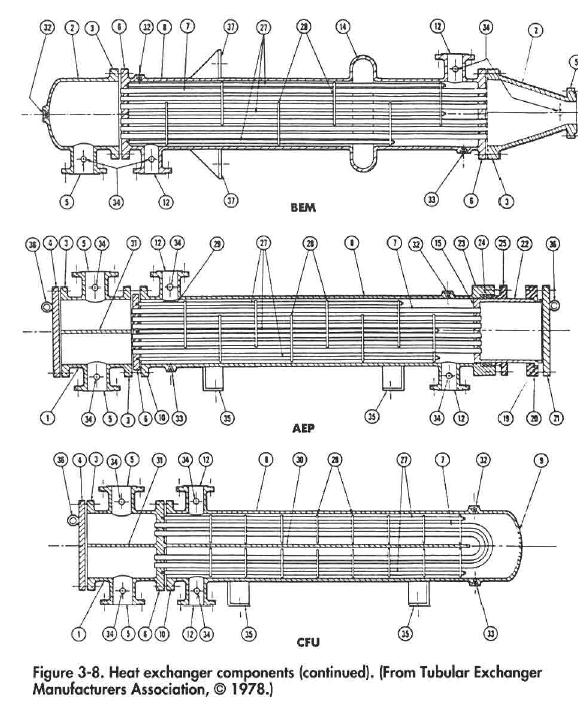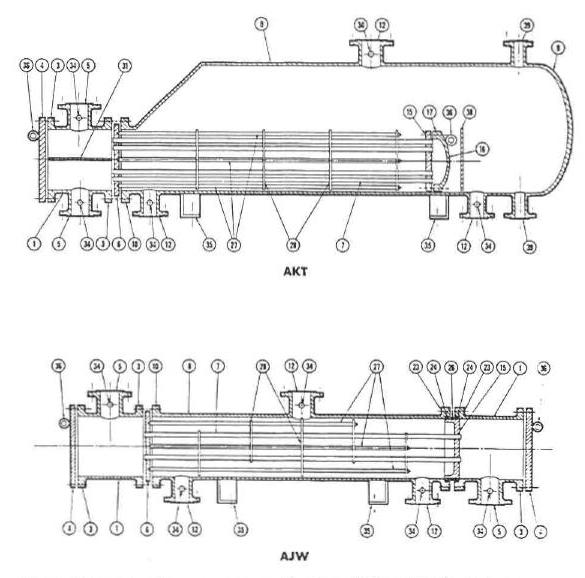Heat Exchanger Types
The figure above shows different arrangements of the shells, tubes and baffles in heat exchangers according to TEMA standard classifications.
The first letter of the standards designates the heat exchanger front end while the second letter designates the shell type or the heat exchanger middle section and the third letter designates the heat exchanger rear section.
Heat exchangers with AES classification have a channel and removable cover type at front end. The front end cover can be removed to perform maintenance and the channel can be removed without pulling the tube sheet. The “E” letter designates a one-pass shell, which means the shell fluid comes from one end to the other end. The heat exchanger rear section is an internal floating head. The head can slide back and forth as the tube sheet expands and contracts.
The heat exchanger is designated as “BBS” if there were no removable cover on the front end of the exchanger. The second nozzle and pass partition in the front end are discretionary depending upon the shell type.
The shell types are E, F, G, H, J, and K. The type E is a one-pass shell. The fluid flows from one side to the other side. The type F shell is a two-pass shell with a longitudinal plate in it.
The type G shell is a split flow. In split flow, the fluid flows in at both ways around the longitudinal baffle and then exits. H is a double split flow. Type J is a divided flow. Type K shell is a kettle type reboiler. Kettle types are common where there is a boiling liquid or where gas is liberated from shell fluid as it is heated. The weir controls the liquid, making sure the tubes are always immersed in liquid. Gas that flashes from the liquid can exit the top nozzle.
Categories: Heat Exchangers | Tags: floating head, heat exchangers | Leave a comment



